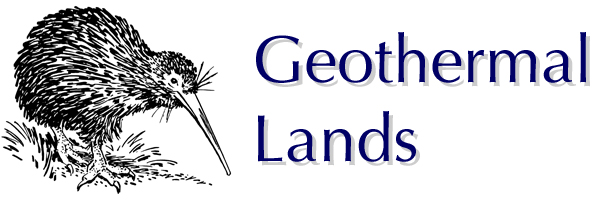
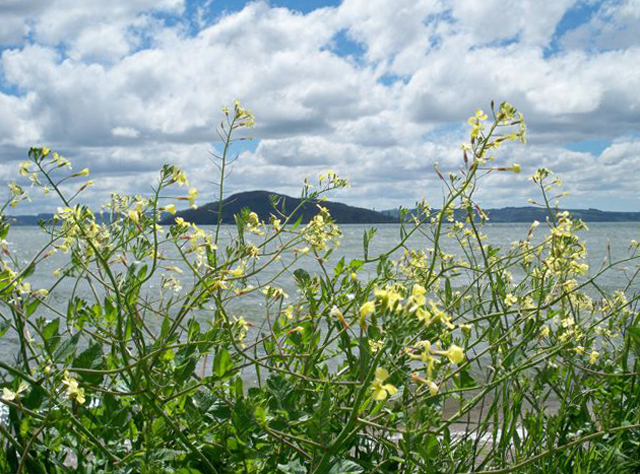
This was my first impression of this strange land after a thirteen hour flight into Auckland and a three-hour bus ride to Rotorua. This is a view of Lake Rotorua from our hotel, Wai Ora Lakeside Spa & Resort, located on Holdens Bay. Our group of seventeen went all over visiting rainforests and witnessing geothermal activity. Our guide who coordinated everything was Helen Van Beek.
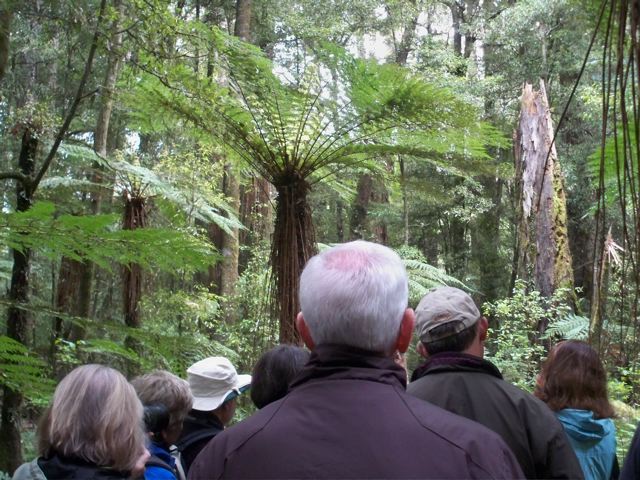
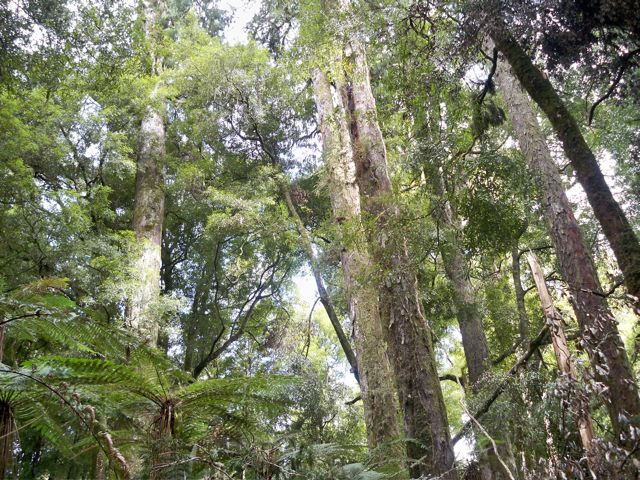
A soothing walk through a podocarp rainforest. Podocarp are an ancient species native to New Zealand. Our guides were Joe Doherty teureweratreks.co.nz, and Richard White ahureiadventures.co.nz.
The Whirinaki Forest and Te Urewera National Park are among the greatest forests in the world. Read a description on Rotoruanz.com.
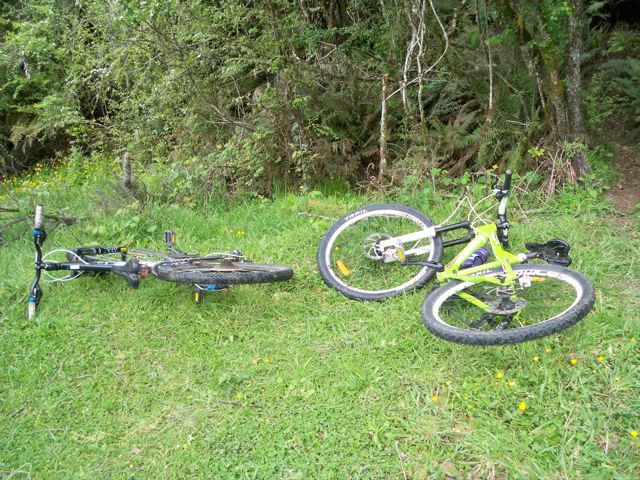
Children left their bikes to hike up to the top of the waterfall. The area includes campsites and a covered picnic area, where we had a picnic lunch prepared by our guides. They brought several loaves of fresh baked bread, delicious local cheeses, pickles, mustard, lettuce, sliced cucumbers and tomatoes, and several types of humus, and other sandwich spreads.
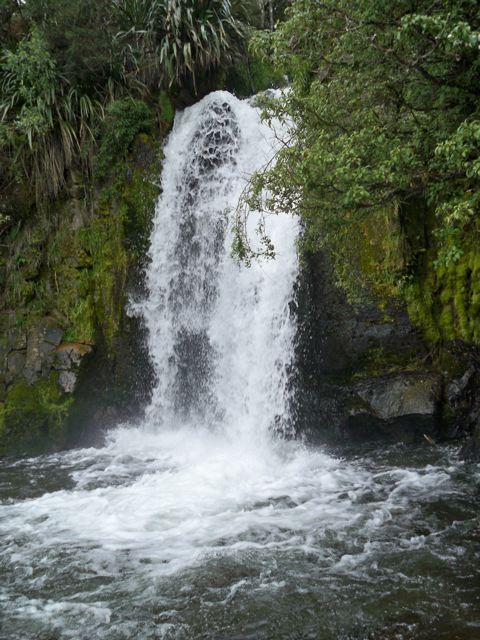
Mangamate Waterfall is the twenty-four hour entertainment.
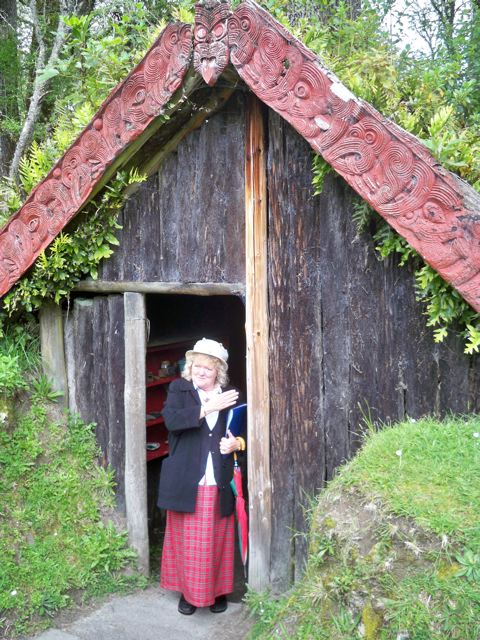
A volcano destroyed the settlements in this area on June 10, 1886, including a hotel that housed tourists and explorers. One hundred and fifty lives were lost, along with the eighth wonder of the world, known as the Pink and White Terraces. The terraces are now submerged under Lake Rotomahana. The Buried Village is an archeological site, museum, and visitors center (buriedvillage.co.nz). This is Karlene Zlahtic, our guide, dressed in clothing of the 1880s. She showed us the remains of structures where people were spared or killed in the volcano.
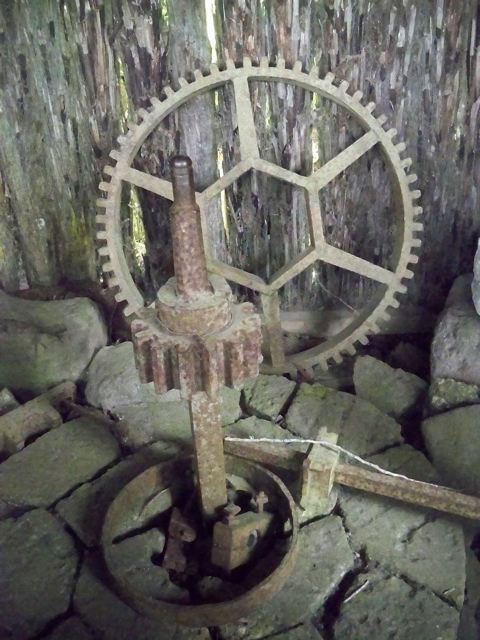
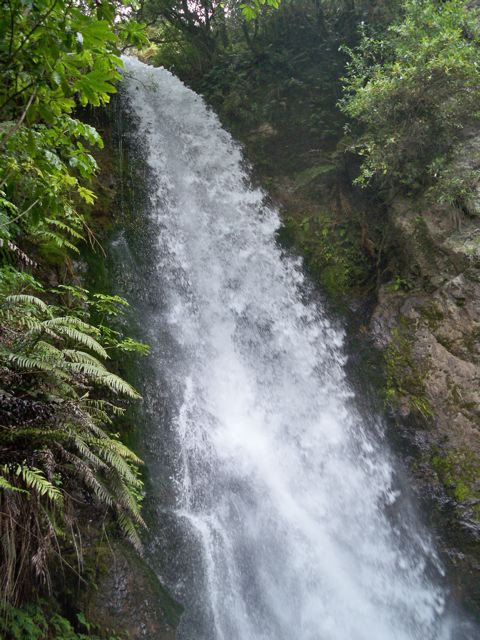
You can take the nature walk and waterfall trail to see Wairere Falls, where Wairoa Stream plunges a hundred feet over the Waitoharuru cliffs.
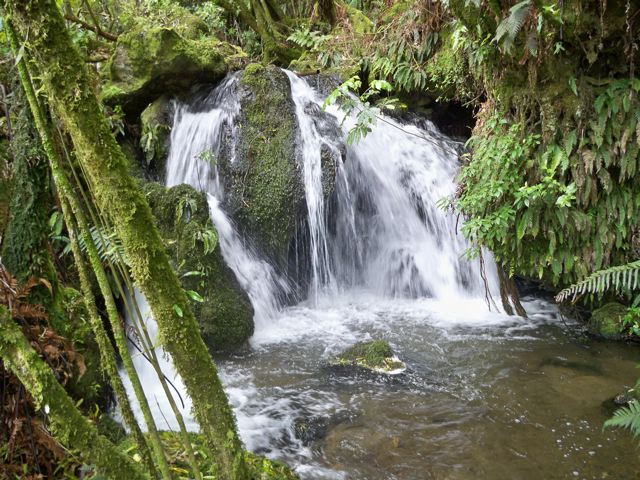
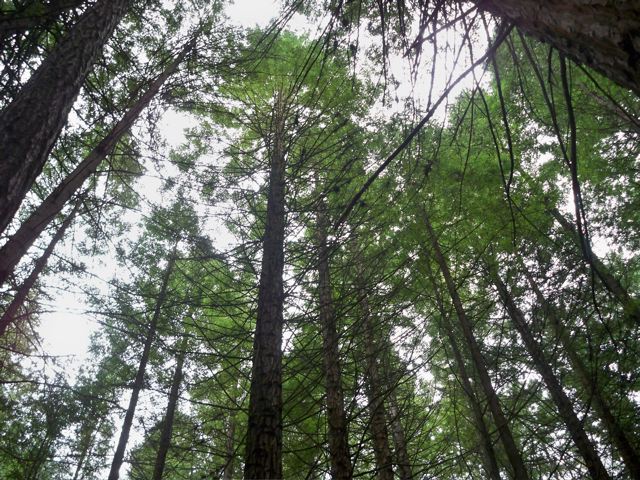
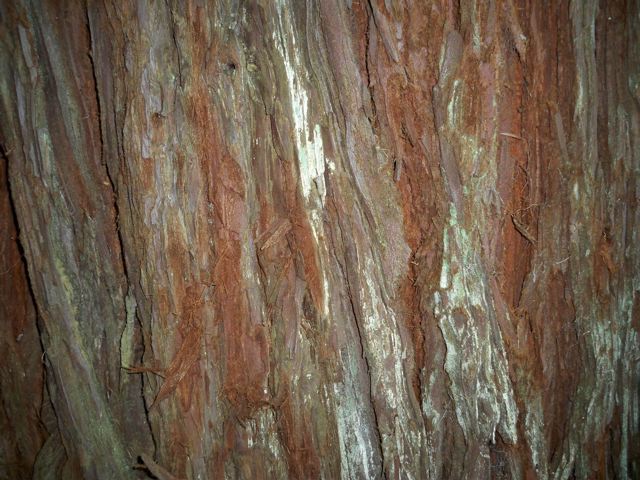
These redwoods were planted about a hundred years ago. There are few areas where redwoods will grow, but they are successful in New Zealand.
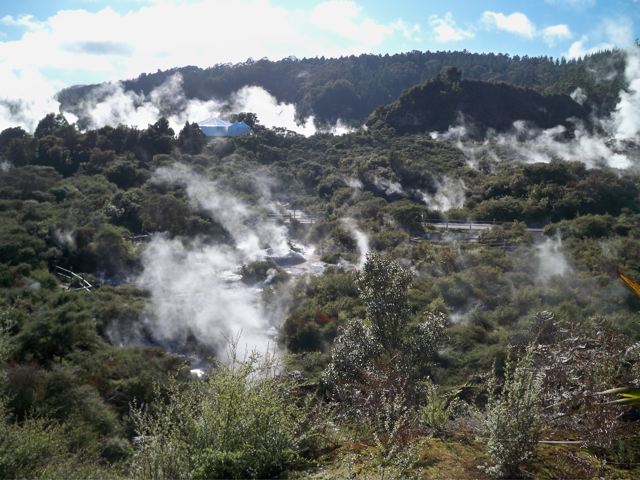
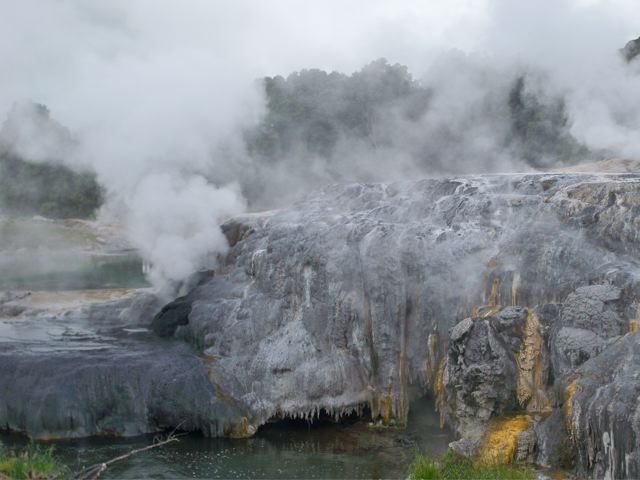
Te Whakarewarewa Thermal Reserve, Rotorua, is the Māori Cultural Centre, Te Puia. It is the home of the national schools for traditional Māori arts: Te Wananga Whakairo Rakau (carving), and Te Rito (weaving). Adjacent to the visitors' center is a thermal village, where families live and practice Māori traditions. Whakarewarewa Thermal Village.
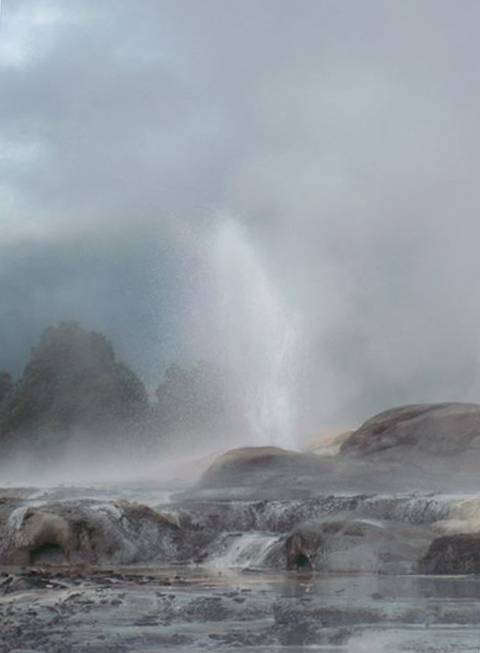
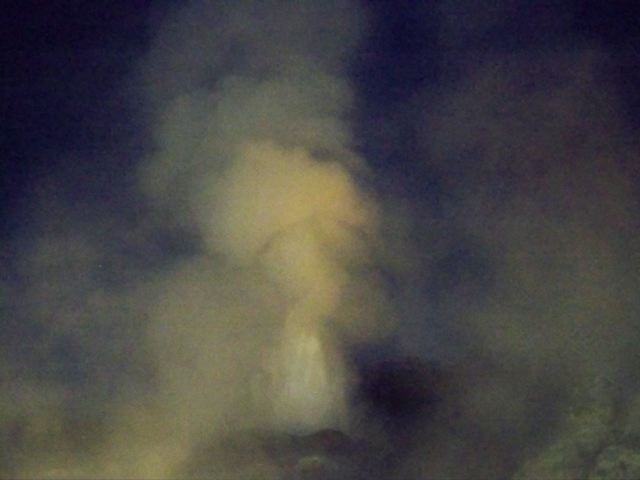
The world famous Pohutu geyser lit with spotlights.
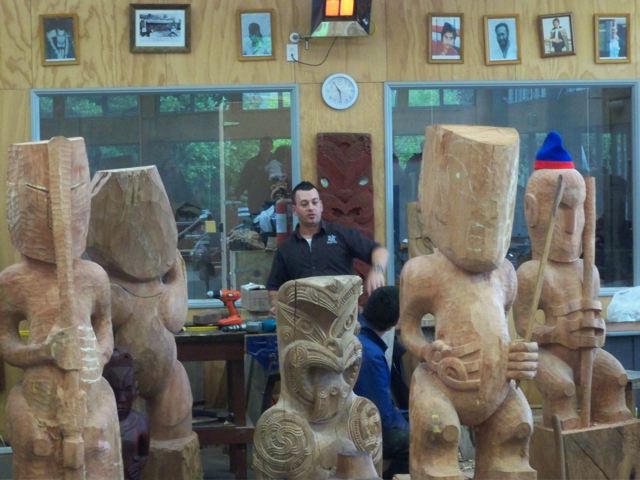
Inside the Te Wananga Whakairo Rakau school.
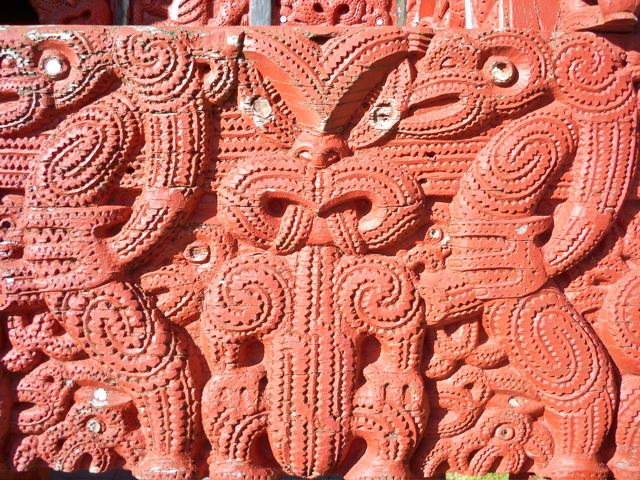
Detail of carvings on the historic storage house.
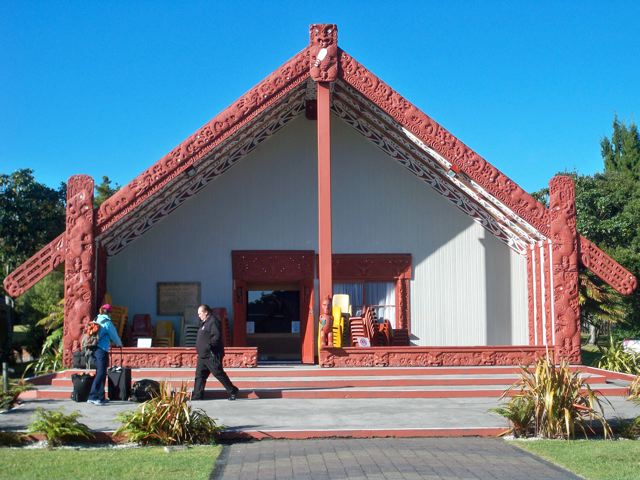
The Marae is the sacred house where they perform the powhiri, a ceremony of greeting and welcome. New Zealanders consider the ceremony sacred. After the ceremonies, we watched a show inside, then had dinner in a building next door.
Our group of seventeen slept over in the Marae. They invite any group of ten or more people to book the room. We all slept soundly after a day of adventure.
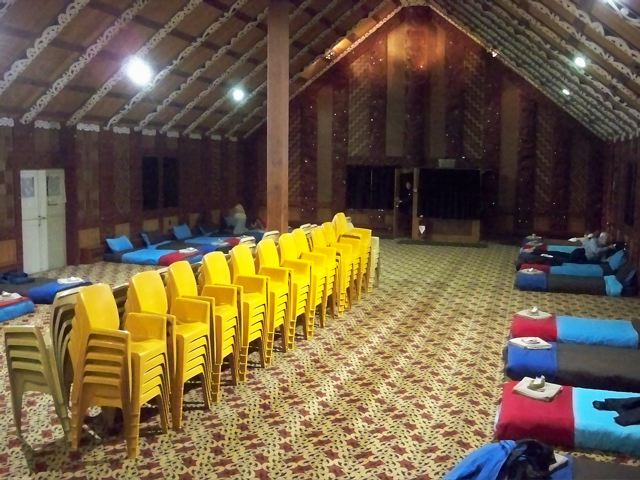
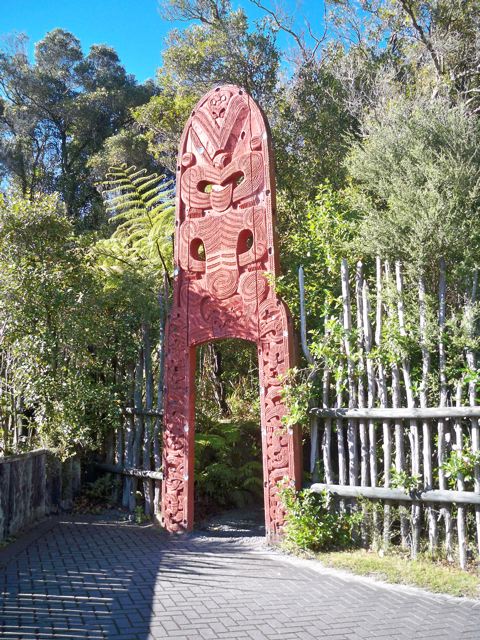
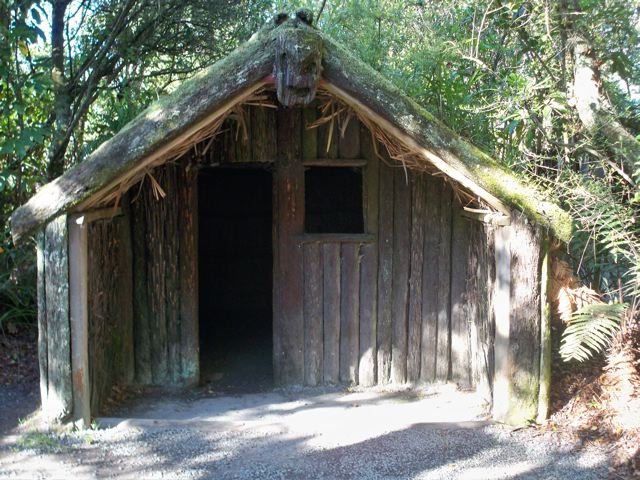
They also have a kiwi house (not shown), where visitors can see the birds up close. Since kiwi are nocturnal, they keep the enclosure on UK time, and alternate two pairs of kiwi between the indoor and outdoor enclosures.
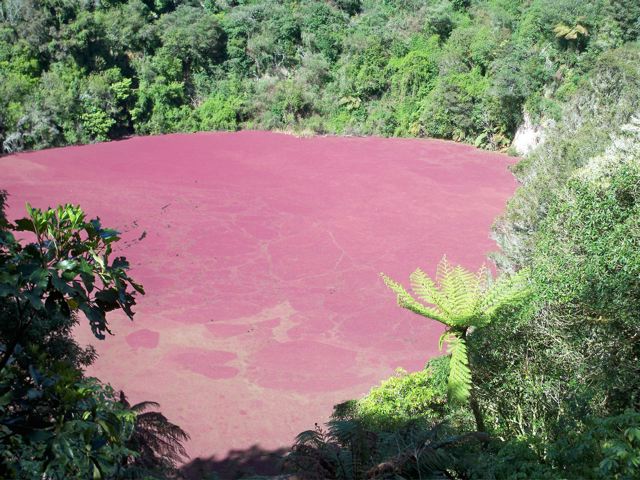
Emerald Pool - this is a cold water pool at the floor of the volcano's Southern Crater. The red color comes from a native floating fern, Azolla, part of the year.
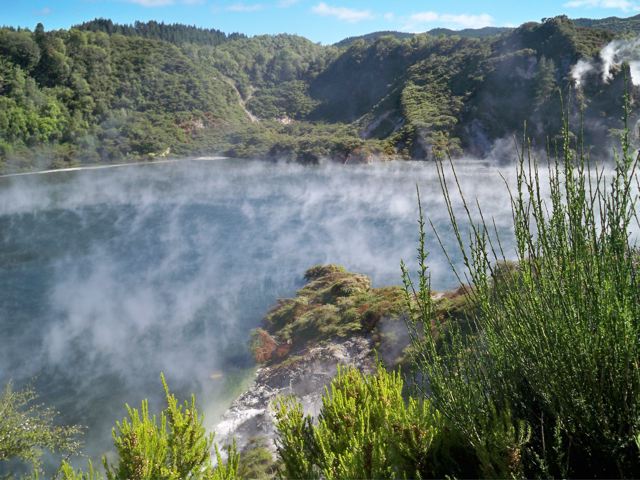
Frying Pan Lake - the water in this lake is close to two hundred degrees, heated by steam vents on the bed of the lake.
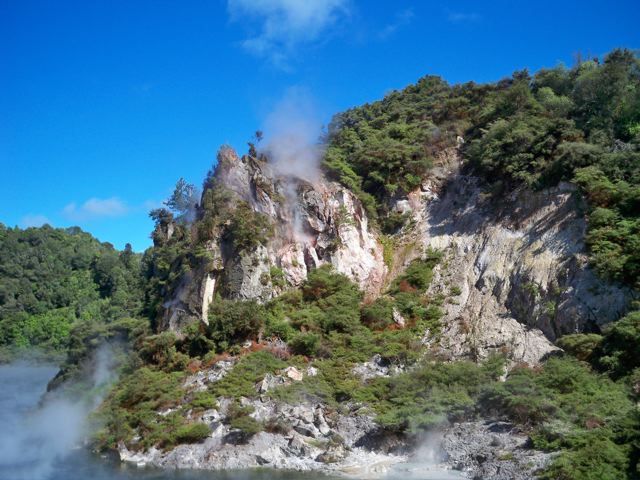
Cathedral Rock. Find full descriptions of these features at Waimangu.co.nz.
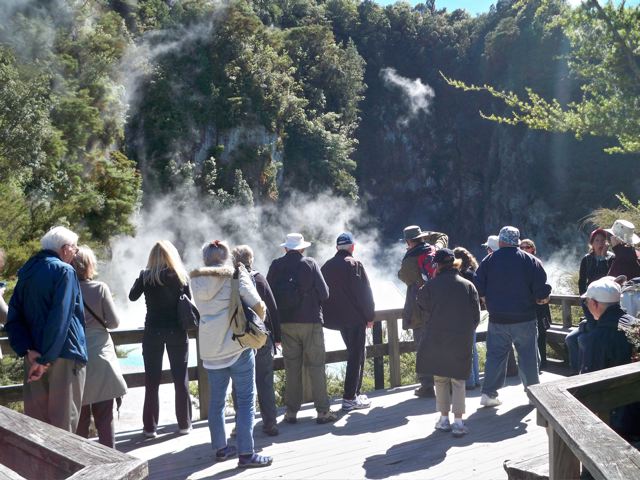
Our group overlooking Inferno Crater Lake.
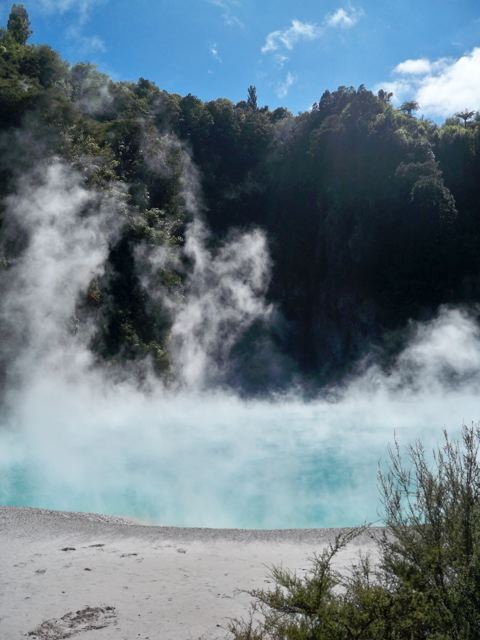
Inferno Crater Lake is a steaming, pale blue lake in a crater blown out in the 1886 volcano. It fills over two weeks, then overflows onto the sandy beach and drains out.
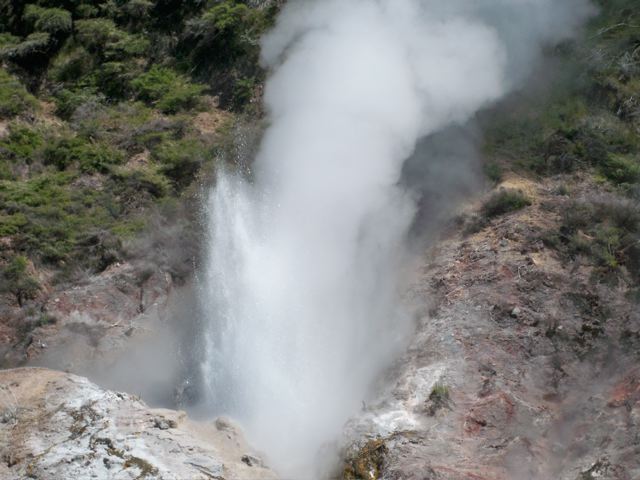
A new geyser on the shore of Lake Rotomahana that just became active a few weeks before we visited.
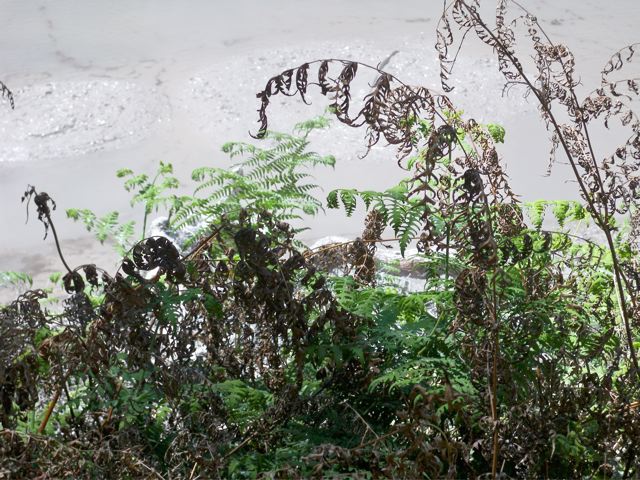
New Zealand's biggest mud pot, located in Wai-o-Tapu Thermal Wonderland.
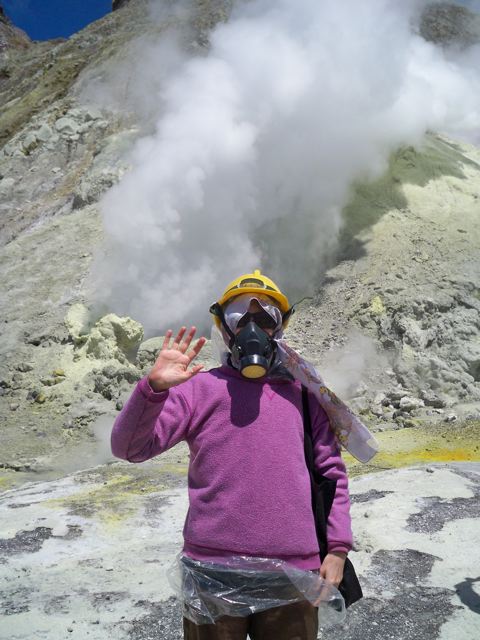
Greetings from White Island, a live volcano thirty-one miles off the coast of the Bay of Plenty.
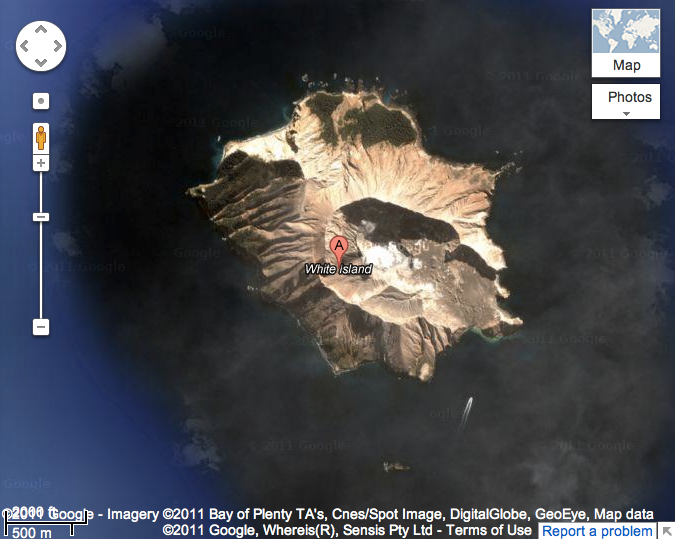
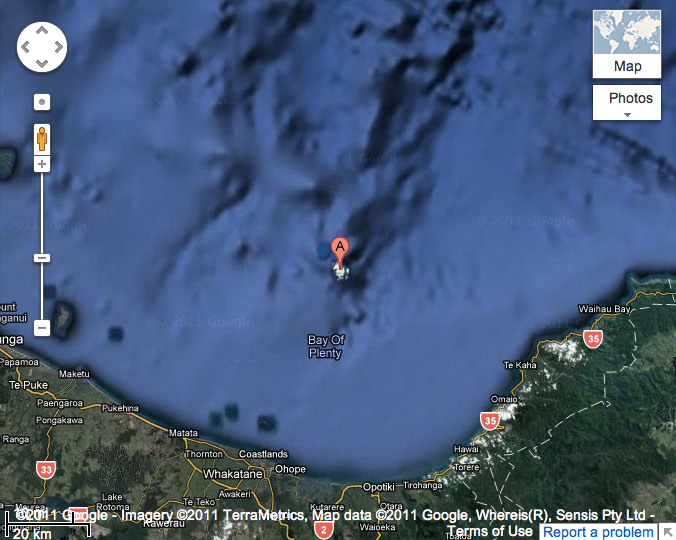

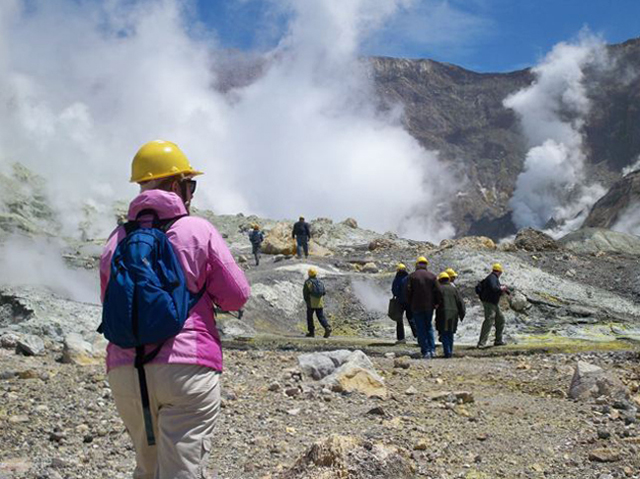
The island is privately owned, but historically it was a sulfur mine.
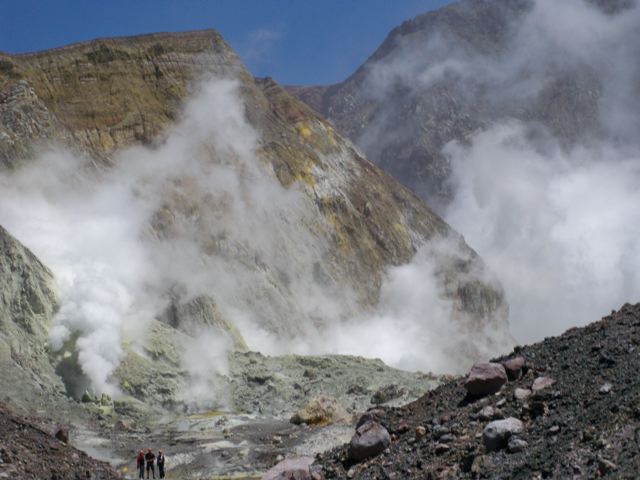
We hiked up to the crater, which is just over the ridge.
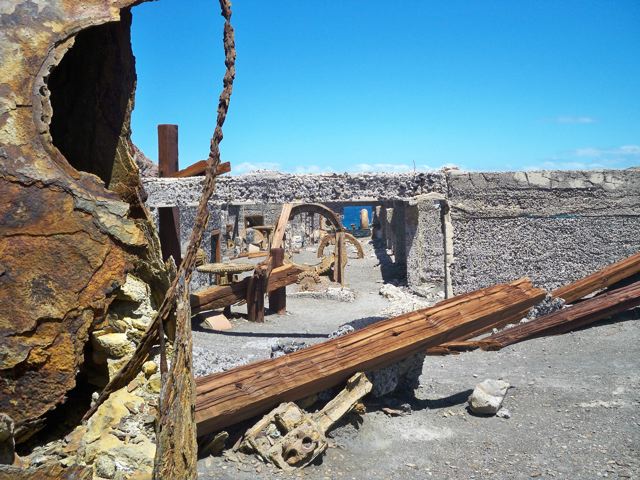
Ruins of the failed sulfur mining operation.
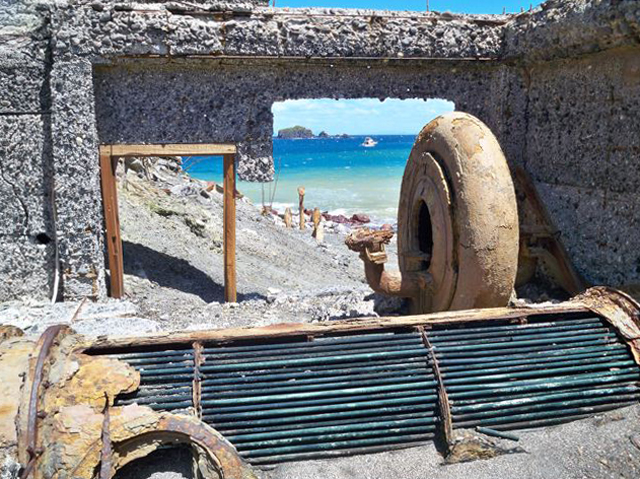
Our boat seen through the remains of the mining building.
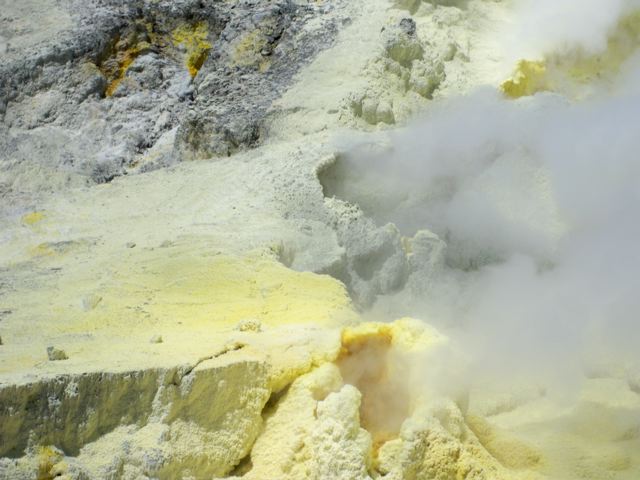
This shows steam escaping from a thermal vent, leaving a build-up of yellow sulfur on the rock.
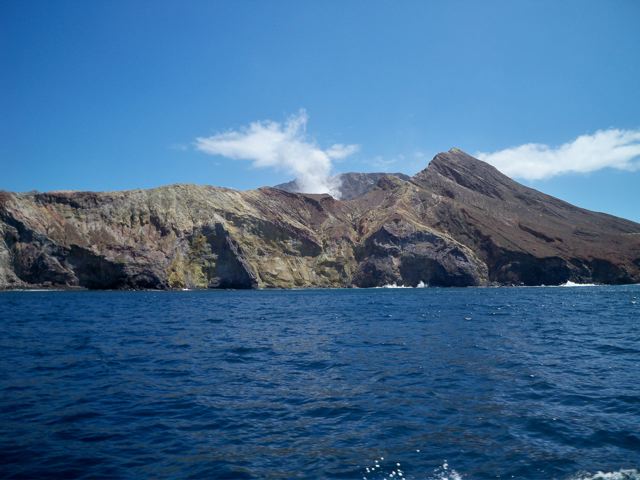
Views of the island as we were leaving.
Editor's note: It is chilling to look back on this experience now. New Zealand is in the Pacific Ring of Fire, and this is the volcano that erupted December 9, 2019, taking twenty-two lives.

Lake Rotorua | White Island | Mangamate Waterfall | Pohutu Geyser - two videos | Wairere Falls | Wai-O-Tapu Mud Pot | Rotomahana Geyser
